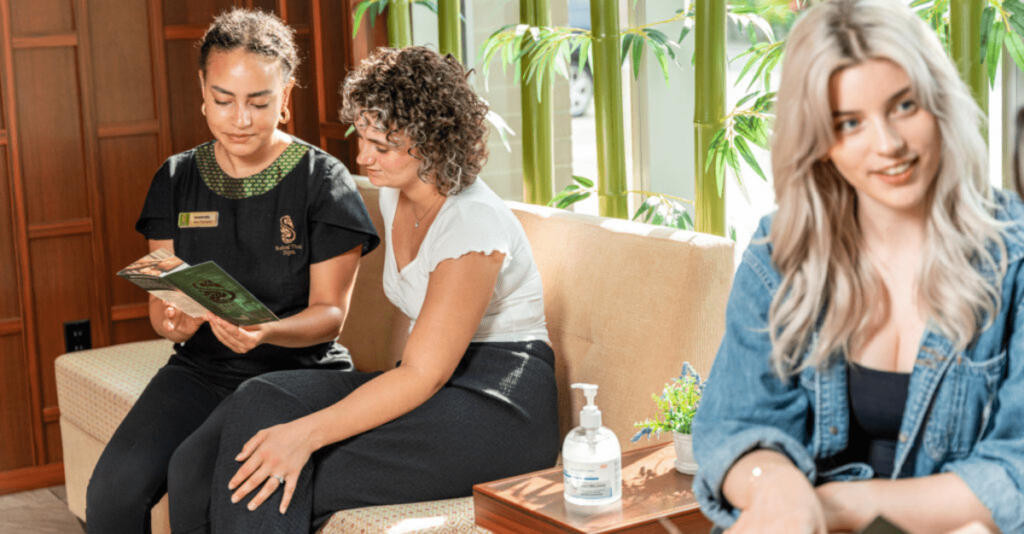When we think of massage, our minds often drift to images of gentle kneading and soothing strokes. However, Thai stretching massage offers a unique and refreshing experience beyond traditional techniques. This ancient practice, deeply rooted in Thai culture and medicine, combines elements of yoga, acupressure, and meditation to create a holistic approach to bodywork.
In this guide, we’ll explore the world of Thai stretching, its various types, benefits, and techniques. Whether you’re a massage enthusiast, a wellness professional, or simply curious about this fascinating practice, join us as we uncover the secrets of Thai massage stretching.
Understanding Thai Massage and Stretching
Before we dive into the specific types of stretches, it’s essential to grasp the fundamental principles of Thai massage. Unlike Western massage techniques that primarily focus on muscle manipulation, Thai massage incorporates a wide range of stretching Thai massage movements designed to improve flexibility, release tension, and promote overall well-being.
The Philosophy Behind Thai Massage Stretching
Thai massage is based on energy lines, or “sen,” running through the body. By applying pressure and performing stretches along these lines, practitioners aim to balance the body’s energy and promote healing. This holistic approach sets Thai massage and stretching apart from other bodywork forms.
The Role of Stretching in Thai Massage
Stretching is a cornerstone of Thai massage therapy. These stretches, often described as “assisted yoga,” help to:
- Improve flexibility and range of motion
- Release muscle tension and knots
- Enhance circulation and lymphatic flow
- Promote relaxation and stress relief
- Boost energy levels and mental clarity
Now that we’ve established the foundations, let’s explore the various types of stretches used in Thai massage.
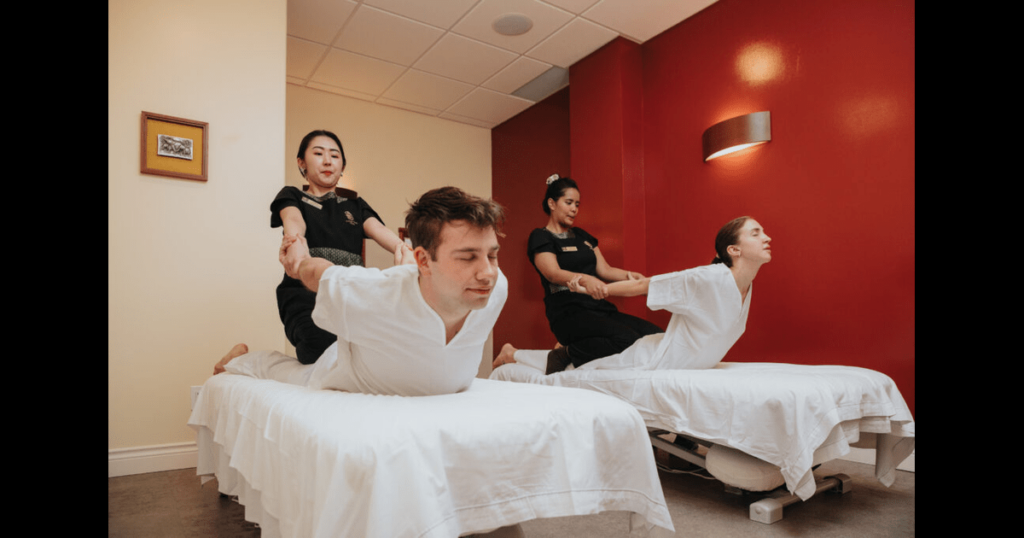
Types of Stretches in Thai Massage
Thai massage incorporates stretching techniques to target specific body areas and address various concerns. The diversity of these Thai massage stretching techniques allows practitioners to create a comprehensive and personalized treatment for each recipient. Let’s delve deeper into the most common and effective types of Thai massage stretches:
Supine Stretches
Supine stretches are performed while the recipient lies on their back. These stretches focus on opening the chest, shoulders, and hips, promoting a sense of openness and relaxation throughout the upper body.
Hip Flexor Stretch
This stretch targets the hip flexors and quadriceps, helping to alleviate lower back pain and improve posture. The practitioner may use their body weight to apply gentle pressure to the recipient’s thigh while extending the leg, creating a deep stretch along the front of the hip and thigh.
Spinal Twist
A gentle spinal twist helps release back muscle tension and improve spinal mobility. This stretch can be performed with the recipient’s legs extended or one knee bent, allowing for variations in intensity and focus.
Chest Opener
In this stretch, the practitioner gently pulls the recipient’s arms back, opening the chest and shoulders. This technique helps to counteract the effects of poor posture and can improve breathing capacity.
Leg Raises
Various leg raise stretches target different muscle groups. Straight leg raises stretch the hamstrings, while bent knee raises focus on the lower back and glutes.
Prone Stretches
Prone stretches are done with the recipient lying face down, focusing on the back, shoulders, and legs. These stretches are particularly effective for addressing tension in the posterior chain of muscles.
Cobra Stretch
Like the yoga pose, this stretch helps open the chest and strengthen the back muscles. The practitioner may use their hands or feet to pressure the recipient’s upper back, enhancing the stretch.
Hamstring Stretch
This stretch targets the back of the legs, improving flexibility and reducing the risk of injury. The practitioner may lift the recipient’s leg while keeping it straight, creating a deep stretch along the entire back of the leg.
Back Arch
The practitioner lifts the recipient’s upper body in this stretch, creating a gentle backbend. This technique helps improve spinal flexibility and relieve tension in the lower back.
Calf and Foot Stretch
By applying pressure to the soles of the feet and gently pushing the toes towards the shin, this stretch helps to release tension in the calves and improve foot flexibility.
Side-Lying Stretches
Side-lying stretches allow targeted work on the hips, shoulders, and lateral body. These stretches are particularly effective for addressing imbalances between the left and right sides of the body.
IT Band Stretch
This stretch helps to release tension in the iliotibial band, a common source of discomfort for runners and cyclists. The practitioner may use their body weight to apply pressure to the outer thigh while moving the recipient’s leg through various ranges of motion.
Shoulder Opening Stretch
This stretch improves shoulder mobility and relieves upper back tension by gently pulling the arm back. The practitioner may incorporate gentle rocking motions to enhance the stretch and promote relaxation.
Lateral Flexion Stretch
This stretch involves bending the recipient’s body to the side, creating a lengthening sensation along the entire lateral line of the body. It can help improve overall flexibility and relieve tension in the obliques and intercostal muscles.
Hip Rotator Stretch
By manipulating the recipient’s bent leg, the practitioner can target the deep rotator muscles of the hip, helping to improve hip mobility and alleviate lower back pain.
Seated Stretches
Seated stretches are versatile and can target multiple areas of the body simultaneously. These stretches often incorporate elements of yoga and can be easily adapted to suit different flexibility levels.
Butterfly Stretch
This inner thigh and groin stretch helps improve hip flexibility and promote relaxation. The practitioner may apply gentle pressure to the recipient’s knees or back to deepen the stretch.
Spinal Extension
A seated forward bend combined with gentle traction helps to decompress the spine and stretch the back muscles. This technique can be particularly beneficial for those who spend long hours sitting.
Seated Twist
Similar to the supine twist, this seated version helps to improve spinal mobility and release tension in the back muscles. The practitioner may use their body to help the recipient achieve a more profound twist.
Neck and Shoulder Release
Various seated techniques, including gentle stretches, compressions, and circular movements, focus on releasing tension in the neck and shoulders.
Standing Stretches
Standing stretches are often used towards the end of a session to energize and balance the body. These stretches help integrate the effects of the massage and prepare the recipient for returning to their daily activities.
Standing Forward Bend
This stretch helps to release tension in the back and hamstrings while promoting overall relaxation. The practitioner may apply gentle pressure to the recipient’s back or legs to enhance the stretch.
Standing Quad Stretch
Stretching the quadriceps helps to improve knee function and alleviate lower back pain. The practitioner may support the recipient’s balance while they perform this stretch.
Standing Side Bend
This stretch helps to lengthen the lateral muscles of the torso, improving overall flexibility and posture. The practitioner may guide the recipient through gentle side-to-side movements.
Standing Backbend
A gentle standing backbend can help open the chest and front of the body, counteracting the effects of prolonged sitting or forward-bending activities.
Practitioners can create a holistic and practical treatment experience by incorporating these diverse Thai massage stretching techniques. Combining these stretches with traditional Thai massage elements like acupressure and energy line work makes Thai stretch massage a unique and powerful form of bodywork. When performed correctly, these techniques can help improve flexibility, relieve pain, enhance circulation, and promote overall well-being.
 Benefits of Stretching for Different Body Parts
Benefits of Stretching for Different Body Parts
The diverse range of Thai massage stretching techniques offers numerous benefits for various body parts. Let’s explore how these stretches can positively impact different areas:
Upper Body Benefits
- Improved shoulder mobility
- Reduced neck and upper back tension
- Enhanced chest expansion for better breathing
- Increased arm and hand flexibility
Core and Spine Benefits
- Better posture and spinal alignment
- Reduced lower back pain
- Improved core strength and stability
- Enhanced overall flexibility of the torso
Lower Body Benefits
- Increased hip mobility
- Improved knee and ankle function
- Enhanced flexibility in the hamstrings and quadriceps
- Reduced risk of lower body injuries
Overall Body Benefits
- Improved circulation and lymphatic flow
- Enhanced energy levels and vitality
- Reduced stress and tension throughout the body
- Better overall body awareness and balance
How to Safely Perform Thai Massage Stretches
While Thai massage therapy stretches can be incredibly beneficial, it’s crucial to approach them with care and proper technique. Here are some essential guidelines for safely performing Thai massage stretches:
1. Proper Training and Education
Before attempting to perform Thai massage stretches, it’s essential to receive proper training from a certified instructor. This ensures you understand the correct techniques, body mechanics, and safety considerations.
2. Clear Communication
Maintain open communication with the recipient throughout the session. Please encourage them to provide feedback on their comfort level and any sensations they experience during the stretches.
3. Gradual Progression
Start with gentle stretches and gradually increase the intensity as the recipient’s body becomes more relaxed and receptive. Never force a stretch or push beyond the recipient’s comfort level.
4. Proper Body Mechanics
Use your weight and leverage effectively to stretch rather than rely solely on arm strength. This helps prevent fatigue and reduces the risk of injury for both the practitioner and recipient.
5. Respect Contraindications
Be aware of any medical conditions or injuries that may contraindicate specific stretches. Always perform a thorough intake and assessment before beginning a Thai massage session.
6. Maintain a Steady Rhythm
Coordinate stretches with the recipient’s breathing to enhance relaxation and effectiveness. Encourage deep, slow breaths throughout the session.
7. Use Proper Support
Ensure the recipient is adequately supported during stretches, using pillows or bolsters to maintain proper alignment and comfort.
8. Stay Present and Mindful
Maintain focus and awareness throughout the session, paying close attention to the recipient’s body language and verbal cues.
Experience the Healing Power of Thai Massage – Your Path to Total Relaxation
As explored throughout this article, Thai massage stretching offers a unique and powerful approach to bodywork that can benefit people of all ages and fitness levels. From improving flexibility and reducing pain to enhancing overall well-being, the diverse types of Thai massage stretch to provide a comprehensive solution for many common health concerns.
Our spa in Langley, BC, provides a serene and welcoming environment where you can relax and rejuvenate through the power of Thai Massage techniques. Whether you’re seeking relief from chronic pain, looking to improve your flexibility, or want to experience deep relaxation, our expert therapists can customize a Thai massage session to meet your unique needs.


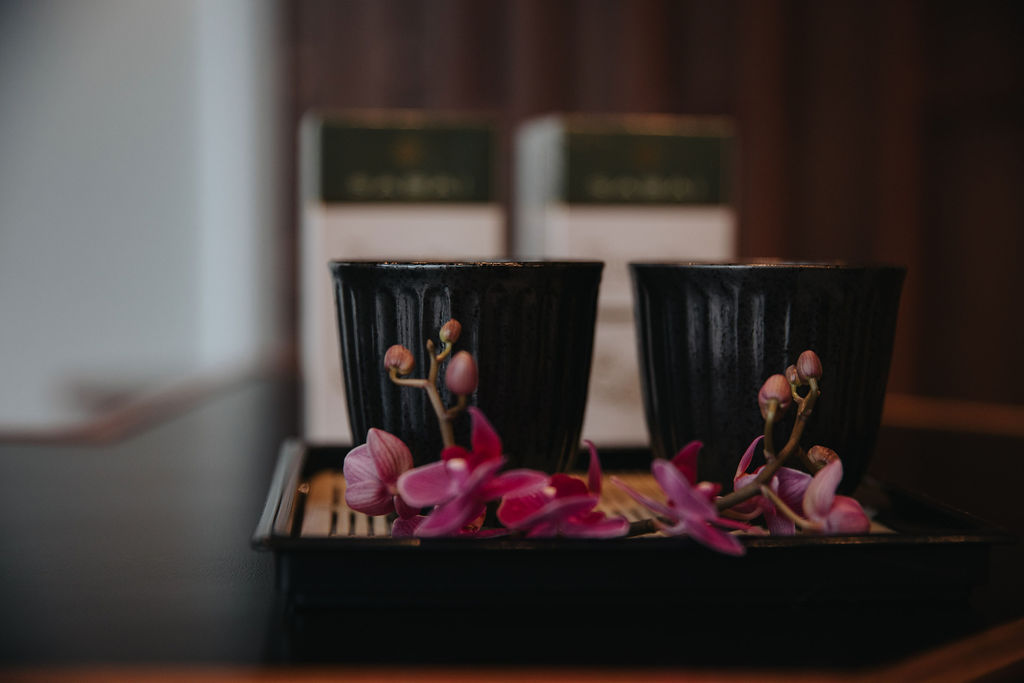
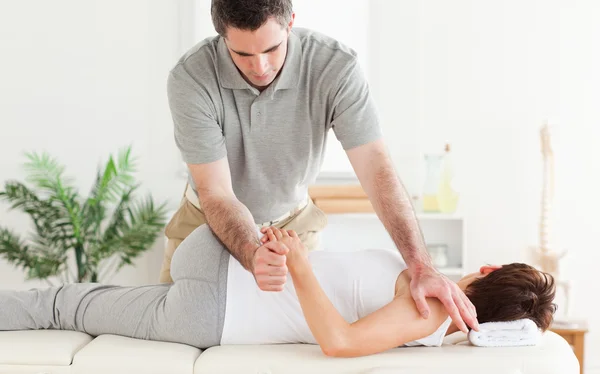
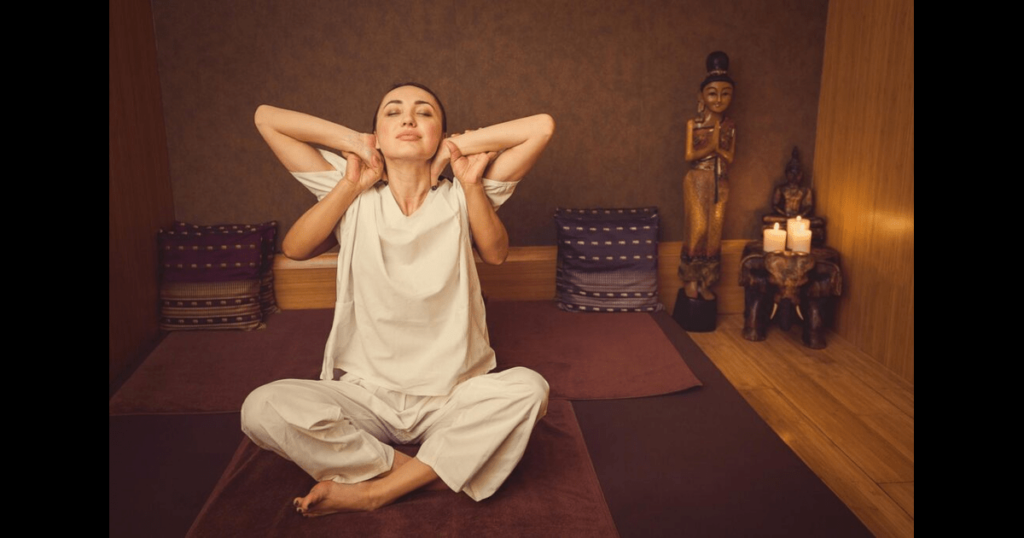 Benefits of Stretching for Different Body Parts
Benefits of Stretching for Different Body Parts